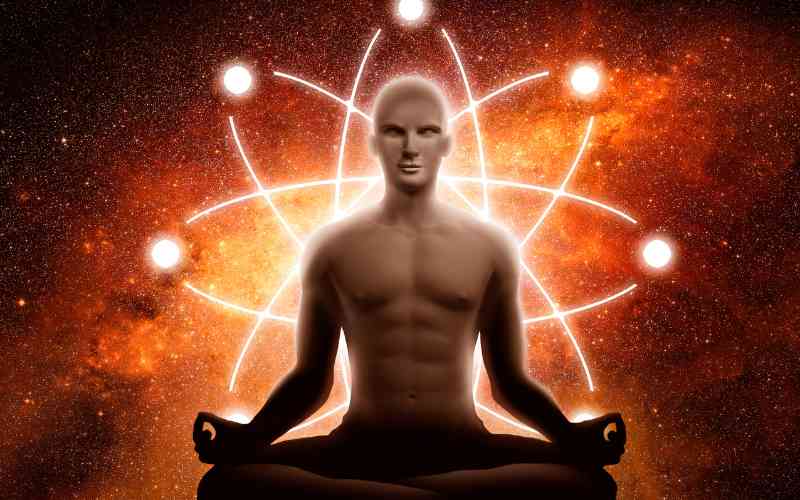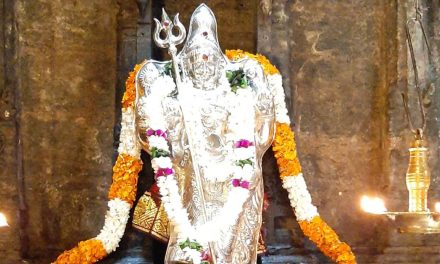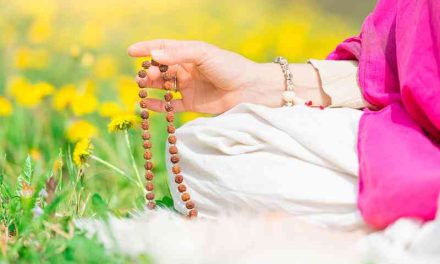Samadhi is a Sanskrit term that means deep yogic contemplation, in which the mind becomes absorbed in the object of meditation and attains a state of blissful awareness. Samadhi is considered as one of the highest goals of spiritual practice, as it leads to the realization of the Atman (Self) and Brahman (Supreme Reality).
But how can one practice Samadhi in the midst of the distractions and temptations of the world? How can one overcome the obstacles and challenges that prevent one from reaching this state of inner peace and harmony?
One of the ancient texts that offer clear and practical guidance on how to practice Samadhi is the Arunika Upanishad, a minor Upanishad in the corpus of the 108 Upanishads of Hinduism. The Arunika Upanishad is classified as a Sannyasa Upanishad, as it deals with the cultural phenomenon of Sannyasa, or renunciation. The Upanishad is presented as a conversation between the sage Aruni and the god Prajapati (or Brahma), who instructs him on how to give up all worldly attachments and attain Samadhi.
In this blog post, we will explore the main teachings of the Arunika Upanishad on how to practice Samadhi, and how they can be applied in our daily lives.
Giving up rituals, mantras and symbols
The first step to practice Samadhi, according to the Arunika Upanishad, is to give up all rituals, mantras, and symbols that are associated with worldly life. These include the Vedic recitation, the sacred thread, the hair tuft, the sacrificial fire, etc. Prajapati tells Aruni:
Relinquish your father, mother, brothers, sisters, sons, friends and relatives; relinquish your hair tuft and sacred thread; relinquish your sacrificial fire and your home; relinquish this world and the next world; relinquish Bhurloka (the earth), Bhuvarloka (the atmosphere), Svarloka (the heaven), Maharloka (the great world), Janaloka (the world of people), Tapoloka (the world of ascetics) and Satyaloka (the world of truth); relinquish Atala (the lowest underworld), Vitala (the second underworld), Sutala (the third underworld), Talatala (the fourth underworld), Mahatala (the fifth underworld), Rasatala (the sixth underworld) and Patala (the seventh underworld); relinquish this egg of creation. Take up a staff and a garment; then you will have given up everything. [1]
By giving up these external signs and practices, one frees oneself from the bondage of karma, or action and its consequences. One also detaches oneself from the identification with the body, mind and ego, which are the sources of ignorance and suffering.
Giving up relationships and desires
The second step to practicing Samadhi, according to the Arunika Upanishad, is to give up all relationships and desires that bind one to the world. These include the attachment to one’s family, friends, relatives, possessions, fame, power, pleasure, etc. Prajapati tells Aruni:
Relinquish all relationships; relinquish everything in this entire universe that you are attached to. [1]
By giving up these emotional ties and cravings, one purifies one’s mind from the impurities of lust, anger, greed, delusion, pride, and envy. One also transcends the duality of pain and pleasure, love and hate, and gain and loss, which are the causes of agitation and sorrow.
Living on herbs and water
The third step to practice Samadhi, according to the Arunika Upanishad, is to live on herbs and water as one’s only sustenance. Prajapati tells Aruni:
Live on herbs; live on water. [1]
By living on herbs and water, one discipline one’s body from indulging in sensual pleasures and comforts. One also simplifies one’s life from unnecessary complications and distractions. One becomes content with what is natural and essential for one’s survival.
Meditating on Om and the Upanishadic teachings
The fourth step to practice Samadhi, according to the Arunika Upanishad, is to meditate on Om and the Upanishadic teachings as one’s only support. Prajapati tells Aruni:
Meditate on Om; meditate on this Upanishad. [1]
By meditating on Om, one attunes oneself to the vibration of Brahman, which is the source and essence of everything. Om is the sound symbol of the Atman, which is one’s true nature and identity. By meditating on this Upanishad, one contemplates on the wisdom and insights that reveal the nature of reality and the way to liberation. The Upanishad is the expression of the direct experience of the sages, who have realized the truth and shared it with others.
Attaining Samadhi and liberation
The final step to practice Samadhi, according to the Arunika Upanishad, is to attain Samadhi and liberation as one’s ultimate goal. Prajapati tells Aruni:
Then you will have given up everything completely. Then you will practice Samadhi. Then you will attain immortality. Then you will attain this Upanishad. Then you will attain this Upanishad. Then you will attain this Upanishad. [1]
By attaining Samadhi, one merges one’s individual consciousness with the universal consciousness and experiences the bliss and peace of Brahman. One realizes that one is not separate from Brahman, but identical with it. One becomes free from the cycle of birth and death and attains immortality. One also attains this Upanishad, which means that one becomes one with the essence and spirit of the Upanishad, which is Brahman itself.
Conclusion
The Arunika Upanishad offers a clear and practical guidance on how to practice Samadhi, which is one of the highest goals of spiritual practice. By following the steps outlined by the Upanishad, such as giving up rituals, mantras, and symbols, giving up relationships and desires, living on herbs and water, meditating on Om and the Upanishadic teachings, and attaining Samadhi and liberation, one can achieve a state of blissful awareness and realize one’s true nature as Brahman.
The practice of Samadhi is not easy, but it is possible for anyone who has a sincere desire and determination to pursue it. The Arunika Upanishad assures us that by practicing Samadhi, we can overcome all obstacles and challenges that prevent us from reaching this state of inner peace and harmony.
We hope that this blog post has inspired you to learn more about the Arunika Upanishad and its teachings on how to practice Samadhi. We invite you to read the original text of the Upanishad, which is available online in Sanskrit and English translations, and to reflect on its meaning and relevance for your own life.
[1] Translation by Patrick Olivelle (1992), The Samnyasa Upanisads: Hindu Scriptures on Asceticism and Renunciation





